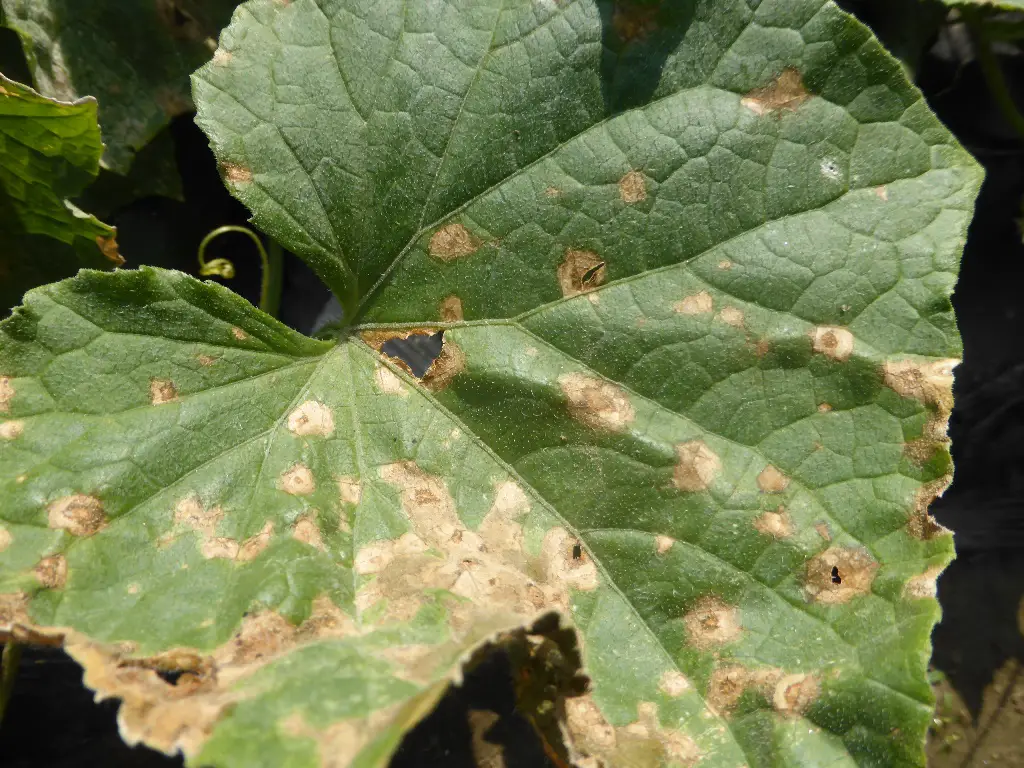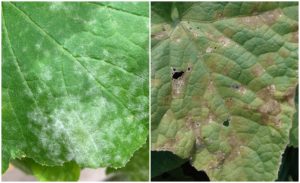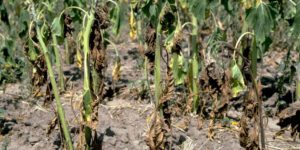Anthracnose refers to a group of fungal diseases that can infect ornamental trees, fruit trees, shrubs, flowers, and vegetable-producing plants like tomatoes, cucumbers, melons, and squash.
Fungal spores that have overwintered in soil, seeds, and plant debris, spread in the spring when new plant growth appears. The wet and cool spring temperatures make the perfect breeding ground for the spores to spread. The infection proliferates further due to damp conditions created by humidity, rain, and overhead irrigation. Once the weather warms and conditions dry out, the spread will slow, but when favorable conditions return, the spread will continue. The disease can also spread via garden tools, wind, and insects.
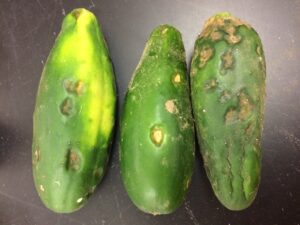
How to Identify Anthracnose Disease
Any part of the plant can be infected by anthracnose, including stems, shoots, leaves, flowers, fruit, and vegetables. Symptoms may vary depending on the specific type of fungus, as well as the host plant. In general, however, the fungus on leaves is characterized by small, irregular shaped spots along the veins. Lesions may first appear on new plant growth. Leaf tissue will turn brown and become papery thin as the infection spreads. Leaves may also curl and fall off.
If lesions appear on fruit or vegetables, it is often because they are overripe. The infection begins with small, brown circular spots that are wet looking. The brown lesions may be surrounded by a yellow border. They may also form a concentric circle pattern. As the lesions grow, they will darken and merge with others to create larger sunken-in lesions. Once the lesions merge, a grayish center may appear. You may also notice pinkish spores have formed in the center of the lesions.
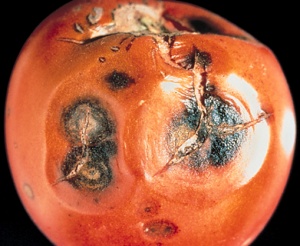
If the fungus attacks trees, you will see brown spots on young branch tips and leaves. Leaf margins may also be affected.
An infection can stunt growth, spoil produce, and, if severe enough, cause the death of the plant. The fungus is usually not as detrimental to trees as it is to other plant life.
Anthracnose can look like other fungal diseases, such as powdery mildew, downy mildew, leaf blight, and leaf spot. One way to determine if the infection is anthracnose is to look at the underside of the leaves. The presence of small beige to brown spots the size of a pin head signals it is anthracnose.
This article contains affiliate links. If you make a purchase using one of these links, I will receive a very small commission at no additional cost to you, and it will help me maintain this website. Rest assured, I only recommend products I actually like!
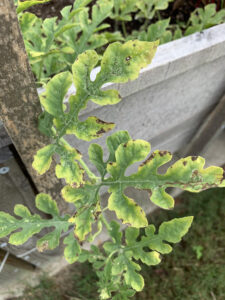
How to Organically Prevent, Treat, and Control Anthracnose
The best way to treat this fungal disease is to prevent it! Here are several ways to ensure the fungus does not take over your garden.
- Start by choosing resistant plant varieties whenever possible.
- When planting, allow plenty of space in-between plants, shrubs, and trees. As the plants grow, prune as needed to maintain good airflow, which will help keep the plants drier and less inviting to the fungus.
- Minimize water on leaves, flowers, fruit, etc., Do not water them from overhead. Instead, use drip irrigation whenever possible.
- Remove plant and garden debris, including weeds, dead leaves, branches, fallen fruit, etc., where spores can continue to spread and overwinter.
- Practice good garden hygiene by disinfecting tools. Here is a helpful “how to” article.
- Remove infected parts of the plant. If the infection is extensive, pull the diseased plant and do not compost any part of it as most compost piles are not hot enough to kill the spores. Do not save the seeds.
 Anthracnose fungal disease on cucumber leaf, Rutgers University
Anthracnose fungal disease on cucumber leaf, Rutgers University
- Use pure, cold-pressed neem oil with the naturally occurring compound, azadirachtin. It is an organic fungicide that can be used preventatively every one to two weeks, as well as for treatment once a week at the first sign of infection. This is the brand I use. You can learn more about neem oil in this article which includes a DIY recipe to make your own spray. Early intervention is key. Other organic fungal treatments can be found in this article on powdery mildew.[1]
- Reduce plant stress caused by improper watering or other unfavorable growing conditions. Also, strengthen the plant’s health by improving drainage, eliminating garden pests, and properly fertilizing. Healthy plants are better able to fight off diseases, including this one.
- Practice crop rotation by not planting crops from the same family in the same spot in successive years.
Anthracnose disease does not have to decimate your garden. Take the proper preventative steps and keep a watchful eye for any symptoms that may still develop. Early intervention will go a long way to keep this fungus at bay.
Thank you for reading this article! If you found it interesting or helpful, please consider sharing it with others via email and social media!
[1] Some gardeners choose to use a fungicide containing copper; however, I prefer not to use them. For one reason, copper can accumulate in the soil and cause health problems for plants, animals, and people.
